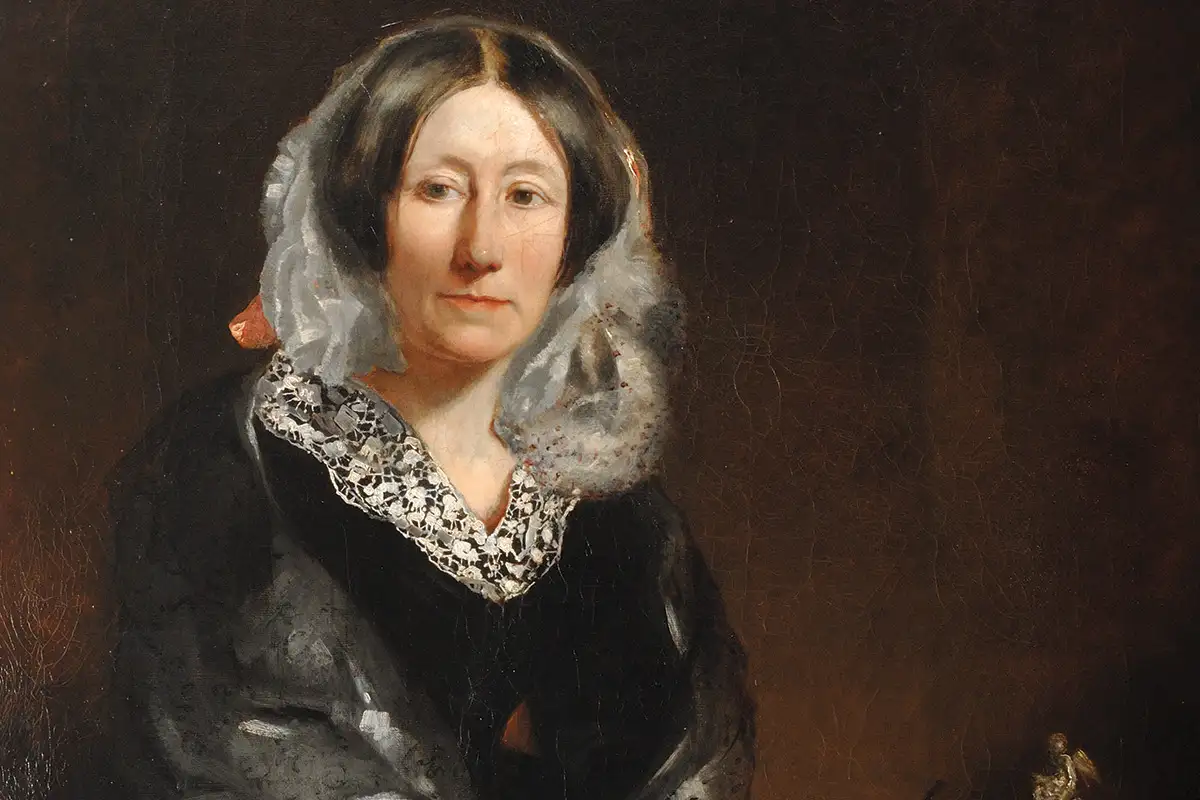
Mary Somerville
Mary Somerville: Pioneer in Astronomy and Mathematical Physics
Mary Somerville (1780–1872) remains a pivotal figure in science history, celebrated for her contributions to astronomy and mathematical physics. Known as the “Queen of Nineteenth-Century Science,” Somerville was among the first women to be recognized professionally for her scientific endeavors. Her work played a crucial role in advancing scientific understanding and fostering public interest in complex scientific fields. Here, we explore her life, achievements, and enduring influence on science.
Early Life and Education
Mary Somerville was born in Jedburgh, Scotland, in 1780 to a naval officer father and a mother from a modest, landowning background. Although education for girls was limited at the time, Mary displayed an early affinity for reading and problem-solving, which eventually led her to mathematics. Her early exposure to basic arithmetic through self-guided studies sparked an interest that would drive her toward deeper scientific pursuits. Encouraged by her father after noticing her keen intellect, she eventually gained access to books and informal tutoring in mathematics and science, rare privileges for women of her time.
Journey to Science and Mathematics
Mary’s initial introduction to formal mathematics came through Euclidean geometry, which she studied intensely, expanding her understanding of calculus and algebra. Despite societal constraints on women’s education, she taught herself through extensive reading and practice, embodying the self-driven scientist. Her intellectual growth was further shaped by interactions with leading scientific figures of her time, including Sir William Herschel, the astronomer famous for discovering Uranus.
Her marriage to William Somerville, a physician supportive of her academic interests, provided her with both the stability and access to scientific circles that propelled her career forward. Living in Edinburgh and later London, Mary participated in salons and intellectual gatherings, cementing her place among prominent scholars and expanding her knowledge base in physical sciences and astronomy.
Contributions to Astronomy and Mathematical Physics
Translation and Commentary on Laplace’s Mécanique Céleste
One of Mary Somerville’s most significant contributions was her translation and commentary on Pierre-Simon Laplace’s Mécanique Céleste, a comprehensive work on celestial mechanics. Laplace’s work used advanced calculus to explain planetary motion, making it inaccessible to the general public. Mary’s translation, The Mechanism of the Heavens (1831), did more than bridge language; she interpreted and simplified the mathematics for broader audiences. Her explanations introduced complex scientific ideas, such as gravitational forces and orbital dynamics, in an accessible format that helped laypeople understand the mechanics of the cosmos.
This translation gained acclaim for both its clarity and its mathematical depth, establishing Somerville as a respected authority in the field. Notably, The Mechanism of the Heavens was adopted as a textbook by the University of Cambridge, marking a groundbreaking moment for women in science and education.
On the Connexion of the Physical Sciences
In 1834, Somerville published On the Connexion of the Physical Sciences, which presented a synthesis of various scientific disciplines, including astronomy, physics, and chemistry. By highlighting the interconnectedness of scientific fields, this work introduced readers to the concept of the “unity of science,” an idea fundamental to later scientific thought. Her ability to synthesize and present complex scientific theories in relatable terms earned her a significant readership and made her one of the most popular science writers of her time.
The book went through multiple editions and was influential in the scientific community, even reaching a young James Clerk Maxwell, who would later make groundbreaking contributions in electromagnetism. Somerville’s work inspired scientists and laypeople alike, establishing the interdisciplinary approach that would become vital to scientific progress in subsequent centuries.
Recognition and Legacy
Mary Somerville’s groundbreaking work led her to be one of the first women inducted into the Royal Astronomical Society in 1835, alongside Caroline Herschel. This acknowledgment was monumental, as women were seldom recognized within scientific institutions at the time. Somerville continued to publish, with later works including Physical Geography, one of the first texts to comprehensively address Earth’s environmental systems and a precursor to modern ecology and Earth sciences.
Her legacy endures not only through her writings but also in the institutions and landmarks named in her honor. Somerville College, Oxford, founded in 1879, was named after her and became one of the first women’s colleges at the university, advancing the education of countless women in science and other disciplines.
Impact on Science Accessibility and Women in Science
Mary Somerville’s commitment to making science accessible was groundbreaking. Her works provided a foundation for public understanding of science and inspired the next generation of scientists and science communicators. Her achievements challenged societal norms, proving that women could excel in scientific fields previously restricted to men. Through her success, she set a precedent for future female scientists and mathematicians, who would follow in her footsteps in a field slowly opening to diverse voices.
Conclusion: Somerville’s Enduring Influence
Mary Somerville’s life and work embody the spirit of curiosity and resilience. Her legacy is woven into the fabric of modern science, where her contributions continue to influence scientific thought, interdisciplinary study, and the pursuit of knowledge across barriers. Somerville’s journey demonstrates the power of intellectual perseverance and serves as an inspiring reminder that scientific inquiry and passion know no bounds.



